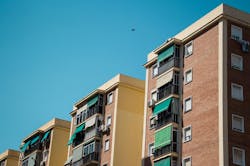The Harvard University Joint Center for Housing Studies recently released its 2017 America’s Rental Housing Report, which found that rental construction was a primary driver in housing recovery post-recession, rebounding to the highest annual level since the late 1980s -- 400,000 units in 2015.
Larger buildings account for most of new rental construction. The number of completed rentals in buildings with 20 units or more rose in 2016 to 83 percent, up 29 percent from 2001. These apartments were just over one-fifth of the rental stock in 2016, at 9.9 million units. This was an increase of 37 percent, more than 2.6 million units, from 2001.
Survey data show that the number of single-family rentals (detached, attached, and mobile homes) increased by only 74,000 units between 2015 and 2016, well below the 400,000 annual increase averaged between 2005 and 2015. The slowdown in single-family conversions is a contributor to the growing share of new multifamily units in all of new rentals being built.
Higher-income households, primarily located in high-rise buildings in downtown neighborhoods with high construction and land costs, are being targeted for new rental housing. The current surge in high-end construction is linked to increasing costs; between 2012 and 2017, the price of vacant commercial land was up 62 percent. Concurrently, the combined expenses of construction labor; materials like gypsum, concrete, and lumber; and contractor fees rose 25 percent, outpacing the general inflation rate of 7 percent. According to estimates included in the Joint Center for Housing Studies’ report, the costs of building a basic, three-story apartment building increased by 8 percent from 2016 to 2017. Strict land use regulations also increase costs by limiting the land zoned and available for higher-density housing and requiring lengthy approval processes.
The report concludes the number of renter households will likely experience sustained and robust growth, driving the need for more supply in a variety of rental housing options.
